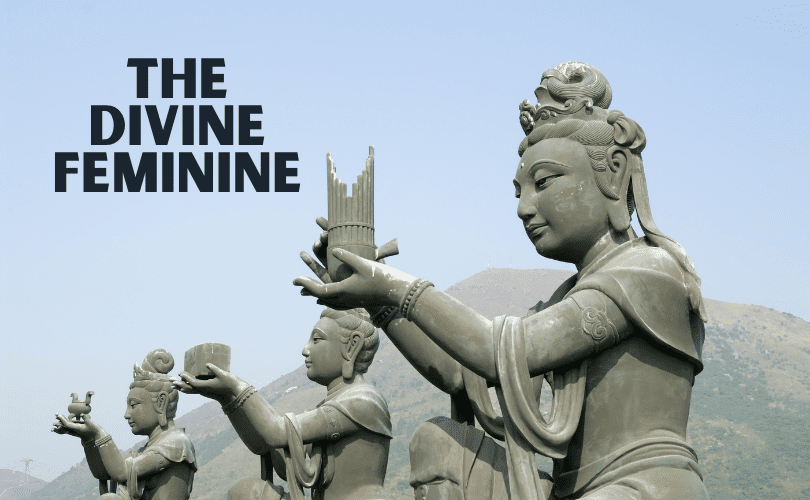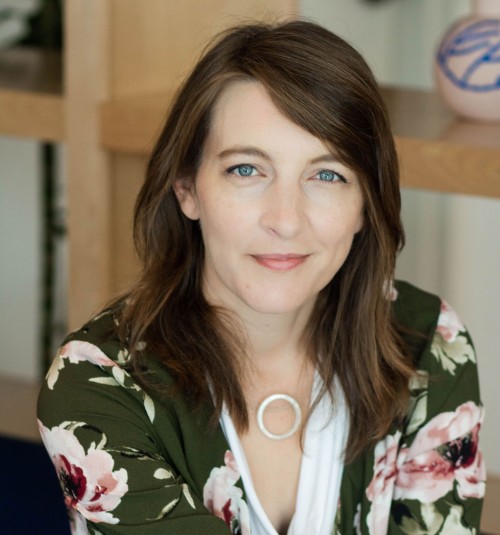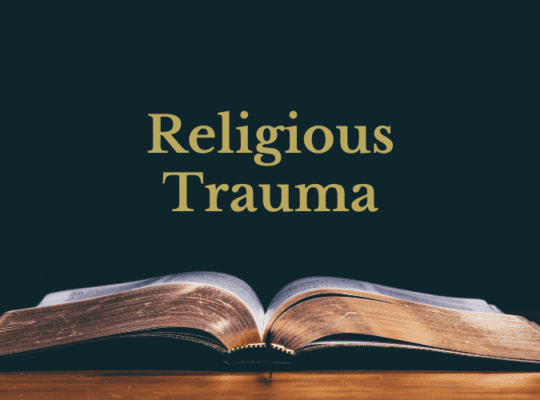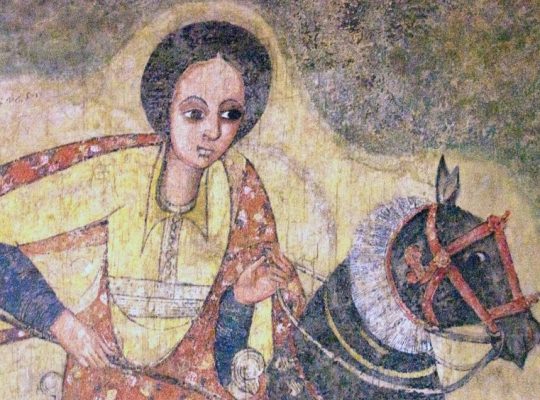The divine feminine is a philosophy or religious view that includes the belief in female deities or goddesses. While belief in the divine feminine does not exclude or refute the existence of Gods, it instead asserts that the divine can be expressed in female or male elements, or combinations of archetypical male or female qualities.
Sexism in Mainstream Religions
One major influence in the rise of divine feminine is due to the amount of sexism women experience within the teachings and norms of mainstream patriarchal religions. Judaism and Christianity have traditionally excluded women from leadership in the church, taught that God and Jesus, and many of the saints are male, and often portray the role of women within the religion as subservient and secondary to men.
One of the most damaging examples is the blame of sin on woman. Eve has taken the fall for convincing Adam to take a bite of the apple from the forbidden tree of knowledge, causing the couple to be cast out of paradise.
Specific examples of sexism within religion:
- God is implied or directly stated to be a man, as is the son of god. Key religious figures, saints and the writers of the religious texts are male.
- Creation myths indicate that man was created first, and woman was created from man.
- The female was given responsibility for causing sin, and often cast as the temptress or harlot within biblical stories
- Women have been barred from religious leadership
- Religious laws dictate that women should submit to their husbands and the control of men, and put restrictions on women’s control of their own bodies. Laws may govern abortion, birth control, and put unequal restrictions on women’s ability to marry and divorce
- Religious values uphold gender norms and women’s roles within the society as child-raising and caring for the family, and may even bar women from driving or owning her own property
- Women who menstruate are seen as unclean and unable to participate in religious services or, at the extreme, are unable to enter their homes or participate in school
Women’s Lost Religious History
However, the divine feminine is not just modern reactionism. Ancient mythologies, spoken word traditions and archaeological evidence from around the world describe female deities and goddess creation myths dating back to 5000 years BC.
The quest to find and describe Goddesses from sources apart from Greek Mythology has long been a quest of scholars. Previous interpretations of early archaeological finds have often been skewed by a male viewpoint, minimizing female contributions to culture and religion and the significance of goddesses.
Marija Gimbutas, an archaeologist and cultural historian of the neolithic age of Europe, published a thesis contending there were proper matriarchal societies within old Europe from 7000 to 3000 BCE. She also argued that the societies were peaceful and eco-friendly and the agricultural revolution in the Neolithic age started in this region. This peaceful region was destroyed by the military invasion of nomads from the Russian plains and changed forcibly into a patriarchal society. Her claims were not without controversy.
The works of Merlin Stone (1976), Jules Cashford (1992), Max Dashu (2016) and Anne Baring (1991) also highlight the role of Goddesses and female divinity. They argue that ancient cultures of Upper Paleolithic times used to worship Goddesses and there was a presence of strong female divinity within the traditions and values of this era.
Contemporary anthological studies on African, Latin American, Mexican and Indian cultures corroborate the idea of divine femininity as well. Many goddess myths and stories have been recovered and written, expanding our modern knowledge of Mother Earth, female heroines and the unique knowledge of the female experience. Matriarchal and egalitarian societies have been sacred spaces for the female gender and spirituality.
The concept of divine femininity can also be traced back to the Chinese philosophy of yin and yang. Yin is the feminine energy which can be understood as unification, incorporation, and direction of inheritance while yang is the masculine energy flow that is directed towards exteriorization, penetration and external action.
Religion as a Means of Control
Matriarchy can be defined on a social and economic level. On a social level, matriarchy is “based on a union of the extended clans.” The kinship, in these clans, is acknowledged on the female line. On an economic level, the matriarchies are often based on agriculture. From new methods of irrigation systems and the early urban cultures, matriarchy continued till the beginning of the neolithic age.
Some have argued that the move from matriarchy to patriarchal religions relates to the desire by ruling classes to control family lines and family wealth. If the ruling class wishes to ensure the sanctity of their biological heirs on the male side, they must ensure the society reinforces monogamy through strict control. Before birth control and DNA testing, it was the only way to ensure your biological heir could be identified. The values of control, domination and assertiveness began to be reinforced and the power of women as creators, food producers, farmers and oracles became diminished. The female goddesses became “conquered” by the male gods or became simply consorts of them, and the rulers were able to use religion as a system of control rather than a path to enlightenment.
The persecution and burning of witches is another example of how women and their religious beliefs were subjugated. Thousands of women were burned globally as society and religious leaders acted to “protect” themselves from women’s religious and mystical powers.
Why Do Goddesses Matter? The Sin of Being Born Female
When your belief structure and that of the society around you says that Godly qualities are male qualities, the given but often unspoken assumption is that female qualities are ungodly.


Women and girls (for that matter any gender or sexuality not aligned completely to dominant male ideology) grow up to believe they are inherently evil, powerless, misguided, and not destined for achievement. The religion instructs women to be subservient, to follow and obey, and to repress their sexuality except for the purposes of procreation and only then within a marriage ordained and dictated by religion. She is property to be handed from her father to her future husband, and then for the purpose of serving this new household and bearing him sons.
The psychological impacts of this upbringing persist long beyond the belief in the religion ends. Anne Wilson Schaef puts it that “A woman’s cavern is where she hides her Original Sin of Being Born Female. We are always aware of it and the need to shrink and fill it.” “To be born female in our culture means to be born tainted, that there is something intrinsically wrong with you that you can never change, that your birthright is one of innate inferiority.” We are left with a ‘cavern in our chest’, a hole where our self-worth and our birthright of divine goodness and personal power should be.
A Path to Healing
People can work to heal their spiritual wounds by reinventing and rediscovering the divine feminine traditions that speak to them. Many will redefine their relationship to the religion they were raised in, and approach worship in new and different ways but within the same structure. Others shed the patriarchal religions and explore new or old religions to create a new foundation for religious worship. One important way to heal and process these wounds is to participate in a healing women’s circle. The wounds and healing can also be explored with a therapist or spiritual director.
Resources
- Adams, Gretchen A. “Milcah Martha Moore’s Book: A Commonplace Book from Revolutionary America.” Journal of Women’s History 11, no. 4 (2000): 194-194.
- Cashford, Jules.
- Dixon, Joy. Divine feminine: Theosophy and feminism in England. Vol. 119. JHU Press, 2001.
- Dashu, Max. Witches and Pagans: Women in European Folk Culture, Veleda Press, 2016.
- Dashu, Max. Suppressed Histories, Accessed Online, 2022.
- Holbrook, Sue Ellen. “Women’s work: The feminizing of composition.” Rhetoric Review 9, no. 2 (1991): 201-229.
- Kohn, Shira. “Jewish Radical Feminism: Voices From the Women’s Liberation Movement by Joyce Antler.” Journal of Jewish Identities 12, no. 2 (2019): 211-213.
- Mann, Susan. ” Fuxue”(Women’s Learning) by Zhang Xuecheng (1738-1801): China’s First History of Women’s Culture.” Late Imperial China 13, no. 1 (1992): 40-62.
- Mollenkott, Virginia Ramey. The divine feminine: The biblical imagery of God as female. Wipf and Stock Publishers, 2014.
- Raff, Jeffrey. The wedding of Sophia: The divine feminine in psychoidal alchemy. Nicolas-Hays, Inc., 2003.
- Ruether, Rosemary. “Goddesses and the divine feminine.” In Goddesses and the Divine Feminine. University of California Press, 2005.
- Schaef, Anne Wilson. “Women’s Reality.” Harper San Francisco, 1991: 33, 169.
- Stone, Merlin. “Ancient Mirrors of Womanhood: a treasury of goddess and heroine lore from around the world.” Boston: Beacon Press, 1979, 1991.









[…] Women have always been warriors, poets, healers and sages. And we still are. (See: What is the Divine Feminine?) […]
[…] you are looking to get in touch with your divine feminine qualities, you are not alone. Many women are waking up to the immense power that they naturally possess. In a […]